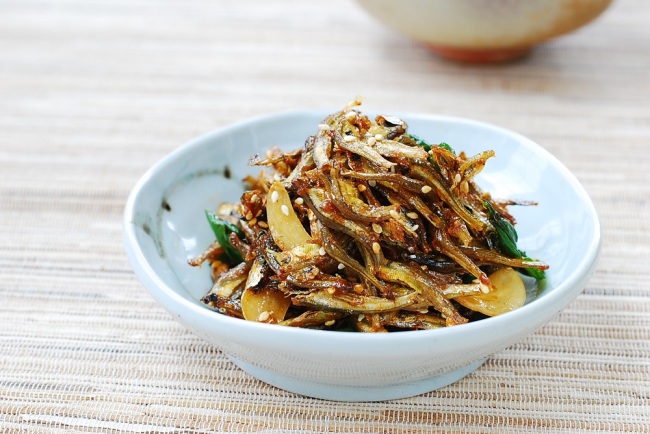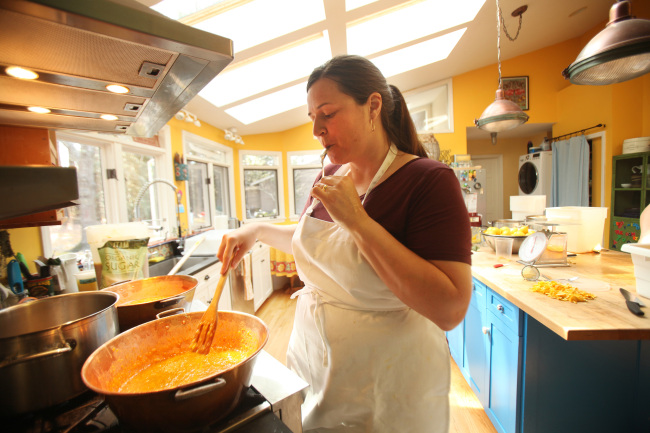 |
| Myeolchi bokkeum (stir-fried dried anchovies) (Korean Bapsang) |
The dried anchovies are first stir-fried in a little bit of oil, and then mixed into a slightly thickened sweet and savory sauce. I added a small amount of gochujang (Korean red chili pepper paste) in this recipe for a spicy kick. Dried anchovies are naturally salty, so don’t over-season them.
Ingredients:
- 1 cup small size dried mulchi (anchovies)
- 2 teaspoons canola or vegetable oil
- 2-3 green chili peppers, cut into small pieces
- 2-3 garlic cloves, thinly sliced
Sauce:
- 1 teaspoon soy sauce
- 3 tablespoons rice wine (or mirim)
- 3 tablespoons water
- 2 teaspoons sugar
- 2 teaspoons gochujang (Korean red chili pepper paste)
- 2 teaspoons corn syrup
- 1 teaspoon sesame oil
- 1 teaspoon sesame seeds
Heat a pan with the oil over medium heat. Add the anchovies and stir fry for 2-3 minutes. Turn off the heat. Transfer to a plate.
Add the soy sauce, rice wine, water, sugar, gochujang, corn syrup and garlic to the pan. Stir the sauce well to dissolve the gochujang. Turn the heat back on. Boil the sauce over medium heat until it bubbles and slightly thickens, about 2-3 minutes.
Add the anchovies and the chili peppers to the pan. Stir until the anchovies are evenly coated with the sauce. Stir in the sesame oil and sesame seeds at the end.

